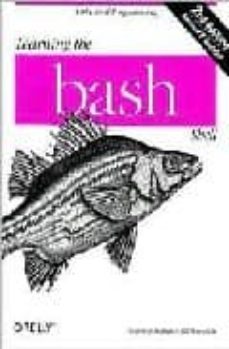Imprescindibles
Ficción
No Ficción
Ciencias y tecnología Biología Ciencias Ciencias naturales Divulgación científica Informática Ingeniería Matemáticas Medicina Salud y dietas Filología Biblioteconomía Estudios filológicos Estudios lingüísticos Estudios literarios Historia y crítica de la Literatura
Humanidades Autoayuda y espiritualidad Ciencias humanas Derecho Economía y Empresa Psicología y Pedagogía Filosofía Sociología Historia Arqueología Biografías Historia de España Historia Universal Historia por países
Infantil
Juvenil
#Jóvenes lectores Narrativa juvenil Clásicos adaptados Libros Wattpad Libros Booktok Libros de influencers Libros de Youtubers Libros Spicy Juveniles Libros LGTBIQ+ Temas sociales Libros ciencia ficción Libros de acción y aventura Cómic y manga juvenil Cómic juvenil Manga Shonen Manga Shojo Autores destacados Jennifer L. Armentrout Eloy Moreno Nerea Llanes Hannah Nicole Maehrer
Libros de fantasía Cozy Fantasy Dark academia Hadas y Fae Romantasy Royal Fantasy Urban Fantasy Vampiros y hombres lobo Otros Misterio y terror Cozy mistery Policiaca Spooky Terror Thriller y suspense Otros
Libros románticos y de amor Dark Romance Clean Romance Cowboy Romance Mafia y amor Romance dramatico Romcom libros Sport Romance Otros Clichés Enemies to Lovers Friends to Lovers Hermanastros Slow Burn Fake Dating Triángulo amoroso
Cómic y manga
Novela gráfica Novela gráfica americana Novela gráfica europea Novela gráfica de otros países Personajes, series y sagas Series y sagas Star Wars Superhéroes Cómics DC Cómics Marvel Cómics otros superhéroes Cómics Valiant
eBooks
Literatura Contemporánea Narrativa fantástica Novela de ciencia ficción Novela de terror Novela histórica Novela negra Novela romántica y erótica Juvenil Más de 13 años Más de 15 años Infantil eBooks infantiles
Humanidades Autoayuda y espiritualidad Ciencias humanas Economía y Empresa Psicología y Pedagogía Filosofía Historia Historia de España Historia Universal Arte Cine Música Historia del arte
Ciencia y tecnología Ciencias naturales Divulgación científica Medicina Salud y dietas Filología Estudios lingüísticos Estudios literarios Historia y crítica de la Literatura Estilo de vida Cocina Guías de viaje Ocio y deportes
BILL ROSENBLATT
Recibe novedades de BILL ROSENBLATT directamente en tu email
Filtros
Del 1 al 4 de 4
O'REILLY & ASSOCIATES 9780596001957
Tapa blanda
O'REILLY & ASSOCIATES 9781565923478
The first thing users of the Linux operating system come face to face with is the shell. "Shell" is the UNIX term for a user interface tothe system -- something that lets you communicate with the computer viathe keyboard and display. Bash, the Free Software Foundation's"Bourne Again Shell," is the default shell for Linux, the popular freeUNIX-like operating system. It's also a replacement for the standardUNIX Bourne shell, which serves both as a user interface and as aprogramming language. Like the FSF's other tools, bash is morethan a mere replacement: it extends the Bourne shell in many ways. Features include command line editing, key bindings, integratedprogramming features, command completion, control structures(especially the select construct, which enables you to create menuseasily), and new ways to customize your environment. Whether you want to use bash for its user interface or itsprogramming features you will find Learning the bash Shell avaluable guide. The book covers all of bash's features, bothfor interactive use and programming. If you are new to shellprogramming, Learning the bash Shell provides an excellentintroduction, covering everything from the most basic to the mostadvanced features, like signal handling and command line processing.If you've been writing shell scripts for years, it offers a great wayto find out what the new shell offers. The book is full of examplesof shell commands and programs that are designed to be useful in youreveryday life as a user, not just to illustrate the feature beingexplained. All of these examples are freely available to you onlineon the Internet. This second editioncovers all of the features of bash Version 2.0, while still applying to bash Version 1.x. New features include the addition of one-dimensional arrays, parameter expansion, and more pattern-matching operations. bash 2.0 provides even more conformity with POSIX.2 standards, and in POSIX.2 mode is completely POSIX.2 conformant. Thissecond edition covers several new commands, security improvements, additions to ReadLine, improved configuration and installation, and an additional programming aid, the bash shell debugger. With this book you'll learn: How to install bash as your login shell The basics of interactive shell use, including UNIX file anddirectory structures, standard I/O, and background jobs Command line editing, history substitution, and key bindings H
Ver más
Tapa blanda
CAMERON NEWHAM y BILL ROSENBLATT
O'REILLY & ASSOCIATES 9781565921474
Tapa blanda
Del 1 al 4 de 4

























